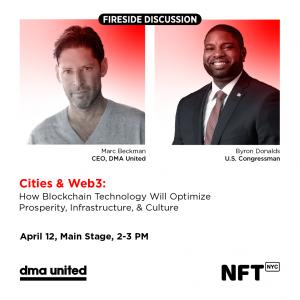Art Blocks does it differently and often

Unlike other NFT collections, Art Blocks is a platform. The focus is generative or algorithmic works of art. The artists create the style of the collection, the colors and shapes, or the “blocks” if you like. Each coin sorts through endless possibilities to create a unique piece. At print time, the customer interacts with a generative script and the result is a randomly generated, unpredictable work of art. Depending on the collection, the resulting NFT can go from a static image to a multimedia experience.
In most other Blue Chip collections, which Women’s world or Doodles, an artist or a group of artists creates the art and its various characteristics. In contrast, several artists are constantly building Art Blocks collections. As you might imagine, some of them are more valuable than others. The platform’s creator is Erick Calderon, better known as Snowfro. He is the artist and coder behind Art Block’s first and flagship collection, Chromie Squiggle. You’ve probably seen them around, and one of the curls serves as the logo for the entire platform.
Other iconic multi-million dollar collections launched through the platform include Fidenza by Tyler Hobbs and Dmitri Cherniak’s Ringers. Of course, there are those who stand out, incredibly successful. New collections and projects are launched through Art Blocks every week, which you can see in this very busy calendar. To avoid gas wars at press time, the platform uses the Dutch auction method. That is, the sale starts with a high price that decreases as time goes by. Customers are waiting for their ideal price, if it ever gets there.
How do art blocks work?
So far, the platform has generated $277 million in primary sales and a whopping $1,320 million in secondary sales. The platform royalties are 10% for primary sales and 2.5% for secondary market sales. From primaries, there is a mandatory 25% donation to the artist’s favorite charity. Which is interesting, but wow, 25%! The artist gets a fair 5% for each secondary resale.
In accordance Art Block’s website, they offer “genuinely programmable on-demand generative content stored immutably on the Ethereum Blockchain.” That is not entirely true. The script and NFTs are there, presumably forever, but the art is too complex to be stored on the chain. The files are in IPFS or other storage solutions.
Art Blocks also claims that “collectors actively participate in realizing an artist’s vision by generating unique algorithmic works of art,” which is debatable. The startling thing is that an Art Blocks holder with access to the script and Ethereum’s ledger can theoretically reproduce NFT. So technically everything they claim is true.
Although Art Blocks is a platform, it is not open to everyone. A team curates the collections and selects the artists worthy of participation. They offer three tiers of collections, each with different characteristics. Let’s take a closer look at them.

ETH price chart for 07/22/2022 on Kraken | Source: ETH/USD on TradingView.com
The different collections
- The curated collection: This is the main one, Art Blocks releases it “on a regular schedule.” Only a select few artists have made it the seven quarterly series So far. According to their website, “Art Blocks established a curation board to carefully select projects for inclusion in our curated collection. The Curated Collection is a group of projects that push the boundaries of generative art in their technical innovation and aesthetic beauty.”
The company’s accountant, Druid, elaborated on the collections’ characteristics in a medium post. “Since launching Art Blocks in November 2020, our first official set includes all curated drops in 2020, with full quarterly sets starting in 2021. Artists have a six-month cooling-off between deploying projects in the curated collection.”
- Playground collection: This one is less formal, “Art Blocks artists previously included in the curated collection” can play around and do whatever they want. Druid expands, “It’s important to note the Playground’s limitations: first, an artist can only start a Playground project after a curated project. Second, only one project per artist can be active in the Playground at a time, and it must be completed before another can be launched on Playground.” There is also “a two-month cooling-off period between deployments of projects in the Playground Collection.”
- Art block factory: This is more general and is for artists who have not necessarily participated in The Curated Collection. According to the website, “The Factory Collection includes projects selected directly by Art Blocks and highlights our standards of technical quality and artistic beauty.” And according to Druid, “Factory artists will be required to sell out the entire project before releasing anything else on the platform. They will also have a two-month cooldown between projects on the platform.”
Powered by Art Blocks (PBAB)
Last but not least, the company offers this very interesting product. “Powered by Art Blocks (PBAB) is a custom branding solution from Art Blocks. It allows the generative NFT embossing technology used by artists at Art Blocks to integrate with third-party sites. This means organizations can use Art Block’s “smart contracts and rendering infrastructure” to generate “branded generative projects.”
PBAB could be huge in the future. Keep an eye on it.
And keep an eye on NewsBTC for other Blue Chip NFT guides, like this one for CloneX and this one for Goblintown.
Featured Image: Screenshot from Art Blocks website | Charts by TradingView

























